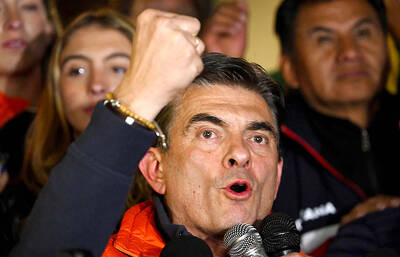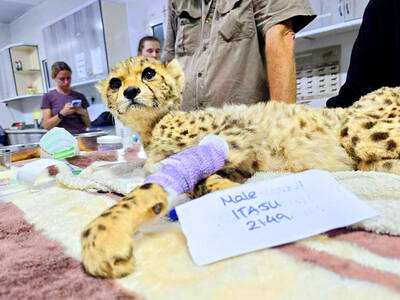Ten years after a devastating earthquake in Christchurch, New Zealand, the Catholic diocese has discovered that it is missing a pair of angels.
As work continues to deconstruct the Cathedral of the Blessed Sacrament on Barbadoes Street — which was extensively damaged in the 2011 quake, along with most of the central city — many treasures thought lost have been recovered.
Catholic Diocese of Christchurch archivist Triona Doocey has been documenting the finds on Facebook — among them, decades-old time capsules, a charity collection box full of outdated currency, and a nativity scene with the figures’ heads “taken clean off.”
However, two bronze angels — in round panels set at each end of the altar in the Holy Souls Chapel, dating back to the 19th century — were found to have gone missing from the site when the altar was removed last month.
“Obviously at some point over the 10 years, someone thought that they’d pop in and take the bronze angels,” Doocey said.
She intends to publicize the loss on social media.
“I’m hoping that someone will go: ‘So-and-so has those in their room,’” Doocey said.
The decision was made to demolish the heritage-listed basilica in 2019, after then-bishop Paul Martin said the restoration would be dangerous and cost millions of dollars.
Demolition got under way in October last year, with an archeologist on site to support in the retrieval of sacred or surprising objects.
“Items that they just don’t know what to do with, they bring to me,” Doocey said.
One was a collection box for St Vincent de Paul, able to finally be given to the charity after a decade — although the coins were no longer in circulation.
“Little quirky things like that, it was just fun to be able to dig them out and say: ‘This is yours,’” Doocey said.
Many of the church’s more precious items had been removed for safekeeping ahead of the February 2011 earthquake, including the doors and a crucifix by artist Ria Bancroft.
However, the number that had been found was remarkable given the damage to the basilica and how long the site has been left in disrepair, Doocey said.
“It’s been said all along that it’s opportunistic salvage,” she said. “It really was touch and go because of the masonry collapsing, asbestos — all sorts of issues like that.”
One of the 14 Stations of the Cross by sculptor Llew Summers, commissioned for the cathedral in 2000, had been vandalized while another panel was damaged during removal, but the others were safely in storage.
Plaques commemorating benefactors and the diocesan centennial had also been retrieved.
Doocey said that, where possible, items with liturgical use — such as an ornate monstrance stand retrieved from a safe room inside the basilica, along with crucifixes and decorative items — would be cleaned or restored and put to use.
“It makes much more sense for them to be out and in use — they don’t belong tucked away,” she added.
Items that were too damaged or costly to repair, or not worth keeping, would be given to Canterbury Museum or parishioners in consultation with the bishop, or put on display in the new cathedral to honor the old one.
Time capsules from the 1980s had been unearthed containing letters about Christchurch residents’ personal connection to the basilica, which Doocey plans to digitize for an exhibition later this year.
Doocey also hopes to be able to restore the nativity scene — which was found with its figures beheaded, apparently by vandals — using a Japanese technique called kintsugi, where broken pottery is put back together with the cracks highlighted in gold.
“I thought it would be a wonderful way of telling the story every Christmas without having to be explicit,” Doocey said. “The cracks will show the damage that was done both by the earthquakes and by humanity.”
The three bishops buried under the floor of a side chapel are to be disinterred in May, while demolition work is expected to be complete by mid-year.
A site for a new cathedral has been earmarked on Armagh Street, although construction has been delayed by rare seagulls establishing a colony there.
Meanwhile, Doocey remains hopeful that the missing angels are to be returned, saying that it would be “really nice to find out what happened to them.”

END OF AN ERA: The vote brings the curtain down on 20 years of socialist rule, which began in 2005 when Evo Morales, an indigenous coca farmer, was elected president A center-right senator and a right-wing former president are to advance to a run-off for Bolivia’s presidency after the first round of elections on Sunday, marking the end of two decades of leftist rule, preliminary official results showed. Bolivian Senator Rodrigo Paz was the surprise front-runner, with 32.15 percent of the vote cast in an election dominated by a deep economic crisis, results published by the electoral commission showed. He was followed by former Bolivian president Jorge “Tuto” Quiroga in second with 26.87 percent, according to results based on 92 percent of votes cast. Millionaire businessman Samuel Doria Medina, who had been tipped

ELECTION DISTRACTION? When attention shifted away from the fight against the militants to politics, losses and setbacks in the battlefield increased, an analyst said Recent clashes in Somalia’s semi-autonomous Jubaland region are alarming experts, exposing cracks in the country’s federal system and creating an opening for militant group al-Shabaab to gain ground. Following years of conflict, Somalia is a loose federation of five semi-autonomous member states — Puntland, Jubaland, Galmudug, Hirshabelle and South West — that maintain often fractious relations with the central government in the capital, Mogadishu. However, ahead of elections next year, Somalia has sought to assert control over its member states, which security analysts said has created gaps for al-Shabaab infiltration. Last week, two Somalian soldiers were killed in clashes between pro-government forces and

Ten cheetah cubs held in captivity since birth and destined for international wildlife trade markets have been rescued in Somaliland, a breakaway region of Somalia. They were all in stable condition despite all of them having been undernourished and limping due to being tied in captivity for months, said Laurie Marker, founder of the Cheetah Conservation Fund, which is caring for the cubs. One eight-month-old cub was unable to walk after been tied up for six months, while a five-month-old was “very malnourished [a bag of bones], with sores all over her body and full of botfly maggots which are under the

BRUSHED OFF: An ambassador to Australia previously said that Beijing does not see a reason to apologize for its naval exercises and military maneuvers in international areas China set off alarm bells in New Zealand when it dispatched powerful warships on unprecedented missions in the South Pacific without explanation, military documents showed. Beijing has spent years expanding its reach in the southern Pacific Ocean, courting island nations with new hospitals, freshly paved roads and generous offers of climate aid. However, these diplomatic efforts have increasingly been accompanied by more overt displays of military power. Three Chinese warships sailed the Tasman Sea between Australia and New Zealand in February, the first time such a task group had been sighted in those waters. “We have never seen vessels with this capability